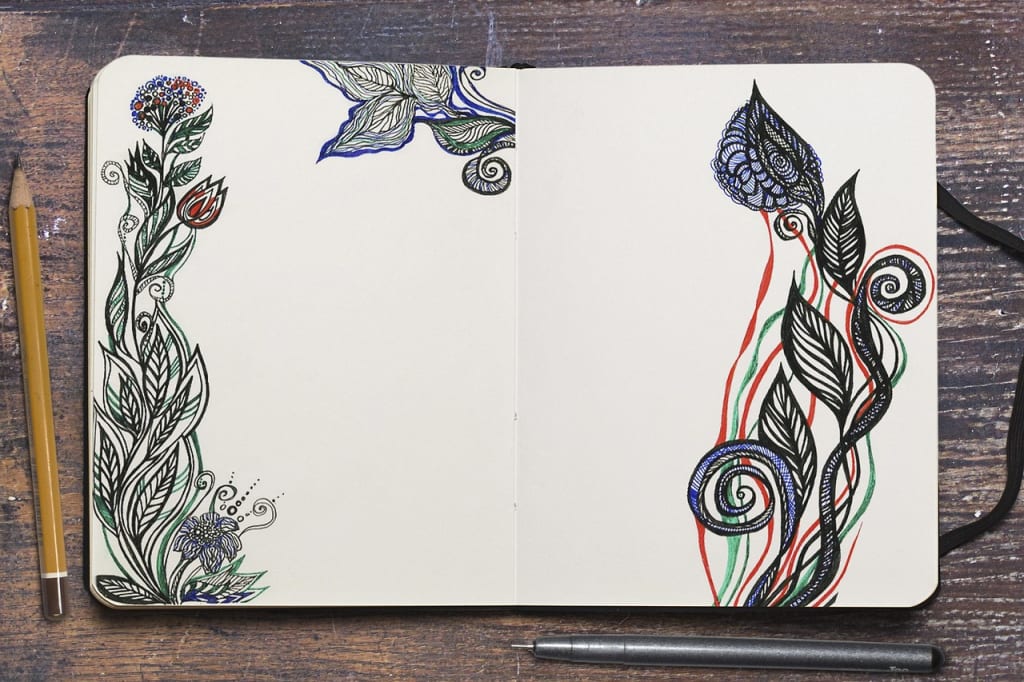
Whether you consider yourself an artist or not, art therapy is something you can do to help you process feelings and heal. While it's often used to help people express feelings they're having trouble articulating in words, it can aid anyone. If you're looking for relief from your anxiety, trying to get rid of some stress in your life, or you're attempting to deal with things like fear and depression, art therapy may be able to help.
A look at what art therapy is
For some, when the word art comes to mind, they think of drawing and painting alone, but there is so much more to art than that. Photography is a form of art, just like dance, music, and writing. Art therapy uses any creative, artistic medium to help people understand their emotions and deal with life better.
Have you ever listened to a song and had it change your mood instantly? That's how art can help. While we're talking about YOU creating art, enjoying art is just another aspect of art therapy.
Art therapy is often used to help people express emotions they're having difficulty with, usually connected to an underlying mental health diagnosis. You can feel anxious and not know why or how to better express those feelings. The same with PTSD, depression, stress, and more -- you know you're having issues, but you struggle to communicate them. Art therapy gives you a new medium for communication and can help you learn to open up more.
If you've ever been to an art museum or flipped through a book filled with art, you've noticed that artwork has a main purpose -- to make people feel something. Art has "hidden" meanings -- some more obvious than others. Even the colors in the artwork say something about the mood of the art itself or the artist. It is the job of your therapist, along with some help from you, to figure out what your particular piece of art is trying to convey.
So, when you see someone who offers art therapy, they are likely to give you an art therapy lesson or exercise that will help you work through your feelings. Once you are done, they will go over what you created with you to talk about different aspects, from colors or lack thereof to shapes and even your use of space in the art. Does your art have people in it? If it does, missing body parts could have a meaning, as could the looks on their faces.
Different types of art therapy
All art has healing properties, and there are a lot of types of art. Dance is a form of art, the same as writing is. Even actors are performance artists. In this aspect, we want to look at some of these forms of art and how they can help you -- and how easy they are to do, for that matter.
Dance and movement -- A lot of folks are leaning into the healing powers of movement and dance these days. Even yoga has a sense of healing from head to toe, internally and externally, and can be looked at as an art form. But we're thinking more of the healing properties of dance. The way movement can allow you to act out feelings and process them.
Digital collage art -- This is Cylestea's favorite form of art. It allows you to use drawing, painting, photography, and anything else you can put online. Sites like Canva and PicMonkey make digital collage art a breeze, and for drawing and painting, you can use your tablet or computer and one of the paint programs already installed. Load a photo and change the distortion and texture. Draw things over your collage to show emotions. Change the colors to adapt color psychology into it -- red for passion or anger, blue for calmness, gray for sadness, etc. You can also do analog collage -- no digital means necessary. Just clip things from newspapers and magazines and go for it.
Drawing, sketching, and doodling -- Just grab a pencil and some paper and start creating. Whether you're an expert or a first-timer, you can use this easy form of arm to express feelings of all kinds. Even if all you can draw are stick people, you can still tell a story.
Painting -- Like drawing, painting is another easy option. You can paint with brushes, sponges, items from nature, and even your fingers. There's no need to create a specific piece of artwork either; you can rely on shapes and colors to tell your story.
Photography -- You don't have to have a camera or be a professional photographer to see the healthful benefits of taking pictures. From photos that bring us joy and help us evoke memories to creative pictures that make us think, photography is a great way to express emotions. Different angles, subjects, and even lighting can say so much.
Sculpting -- While you may be of the age that you sculpted an ashtray for your parents in elementary school, sculpting can be healing. You also don't need any kilns or pottery tools. You can use Sculpey clay that hardens in the oven or air-dry clay. Create animals, people, or random shapes that express the emotions you're dealing with. You can also sculpt with newspaper and glue, aka paper mache. One interesting thing you could do is make a mask that expresses the feelings you're struggling with.
Sewing -- Sewing is another form of art that you may not have thought of right away. Whether you're hand sewing or using a machine, this can be a relaxing tool (just try not to poke yourself). When it comes to sewing your feelings, consider sewing an animal that expresses how strong you wish you were, or shows your fears. You could also sew a doll or a poppet, that is a representation of you. You can use this poppet in healing rituals, or simply talk to it as if it is another version of you.
Writing -- If you've ever kept a journal or a diary, or even written a Dear John letter, you already know how important the words we write are, and how we can let go of things simply by writing them down. Work through your emotions and fears through poetry or essay writing. Write a letter you'll never send to yourself or someone who hurt you, then burn it in symbolism of letting go (or bury it if you are worried about setting off your smoke detectors).
----
If you work with a coach, like Cylestea/Yvonne, they can help direct you in creating art that helps you cope and they can also assist you in understanding what your art is saying to you and how to use it to heal.
About the Creator
Enjoyed the story? Support the Creator.
Subscribe for free to receive all their stories in your feed. You could also pledge your support or give them a one-off tip, letting them know you appreciate their work.





Comments
Test is not accepting comments at the moment
Want to show your support? Send them a one-off tip.